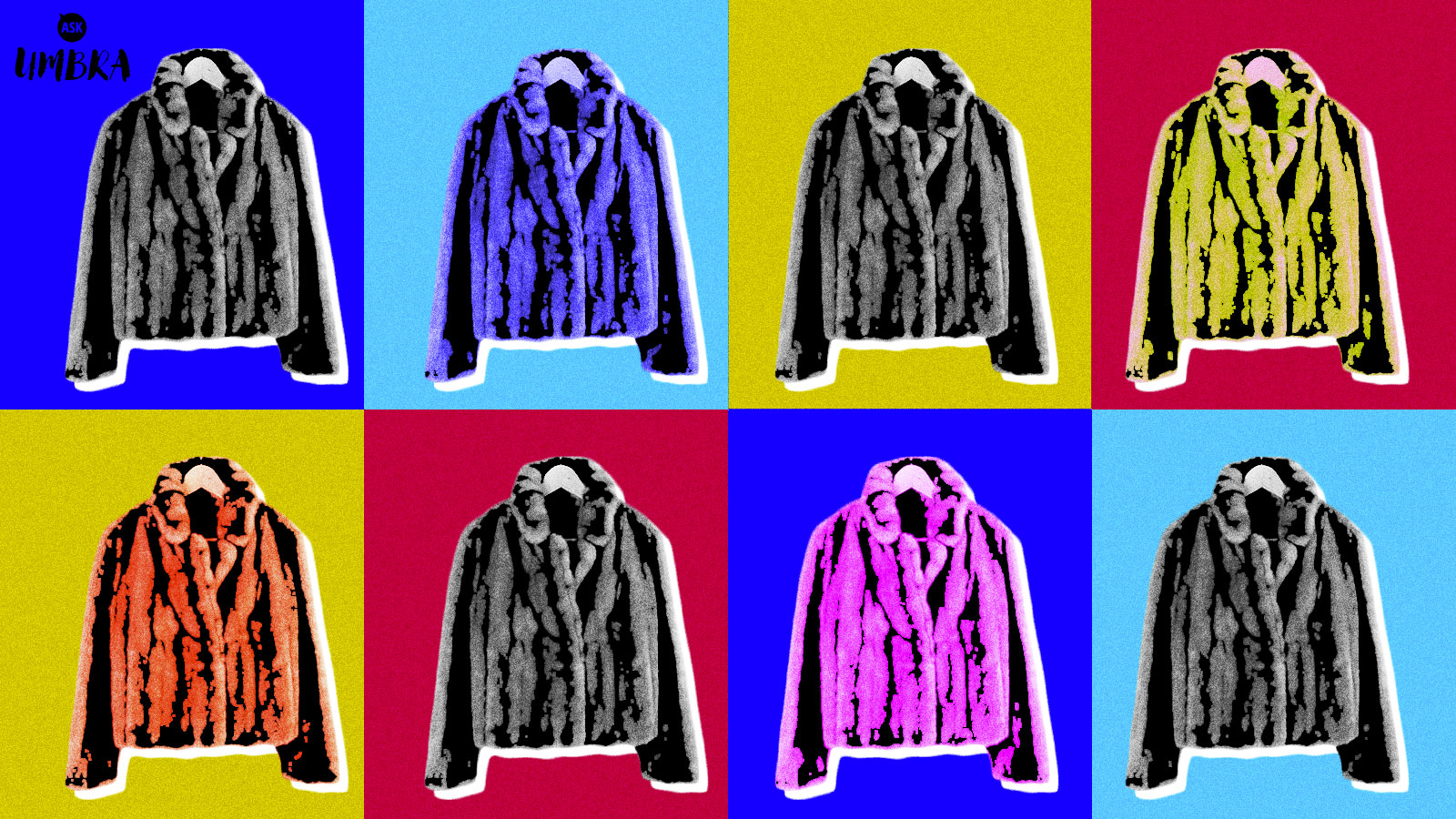Q. Dear Umbra,
Which has a smaller environmental footprint over the long term: real leather or (petroleum-based) vegan leather? What about fur?
— Contemplating Results of Uncertain Ethics, Luxury Looks, Aesthetics
A. Dear CRUELLA,
One thing you should know about me is that I love a look. I was recently inspired by Drake and bought a secondhand ice-blue faux mink jacket, which makes exactly zero sense in Seattle, but if I wanted to live my life in a giant raincoat I’d become a morose Icelandic fisher or something. Anyway: Why faux? First, as the writer Cat Marnell has correctly noted, it comes in more fun colors! Second, I don’t want to be assaulted by Pamela Anderson — actually, that would be sick, but I don’t want to be assaulted by one of her PETA acolytes.
If you want me to say that I bought faux because it’s more climate-friendly, you’d be disappointed. Faux actually does have a lower environmental footprint than real fur or leather — which I’ll explain more in detail in a second — but from my perspective, it’s beside the point when you’re buying secondhand. My pet issue right now, in the already deranged year 2020, is keeping clothing out of the landfill.
Let’s look at fur first. A Dutch cradle-to-grave life-cycle assessment of a natural mink coat vs. a faux mink coat found the climate impact of the natural coat to be at least six times that of the faux coat. Makes sense: Mink farms have a remarkable greenhouse gas footprint — much higher than the production process of other textiles and fully five times the footprint of wool. That mostly comes from the nitrous oxide in the poop produced by mink — gross, I know — and the emissions produced by the animals that they like to eat (chicken and fish, just like us!).
People like to give faux fur a bad rap because it tends to be petroleum-based and doesn’t naturally decompose, releasing all kinds of potentially damaging microfibers into the ecosystem. But Tara St. James, the sustainable fashion designer behind the brand Study New York and Re:Source, a sustainable textiles library, has pointed out that there isn’t even infrastructure to compost most bio-based textiles, so it’s not like a fur coat is necessarily going to some significantly superior ecological afterlife. And real fur can get treated with all kinds of long-lasting, polluting chemicals like formaldehyde. Fur has the additional knock against it that it’s more high-maintenance; if it’s stored in a chilled vault or something during warm months to keep it intact longer, that’s extra energy that goes into its care.
A lot of faux fur’s bad rap has been propagated by the fur lobby itself, to nobody’s surprise, because faux fur, in feel and aesthetic, has come closer and closer to the real thing in recent years. And the real thing has been put on blast by an increasing number of brands and designers, in a movement led by sustainable fashion pioneer Stella McCartney and taken up by a long list of luxury names including Gucci, Prada, and Maison Margiela. That’s mostly due to the obvious animal welfare issues entailed in raising animals for the sole purpose of turning their pelts into coats, but the climate and chemical contamination issues are starting to get some more attention, too.
Notably, most of the brands that have come out as fur-free have not abandoned leather, and that’s its own complex debate right there. Because leather obviously comes from cows, and cows are a methane scourge, and the fact that you have to raise a whole cow to make a leather coat or boot or sex harness or what have you means that the environmental impact of real leather theoretically outstrips faux leather in almost every category.
But that’s making one major and largely inaccurate assumption: That a cow is raised explicitly for leather production. Really, they’re raised primarily for meat, and leather is best described as a useful byproduct of the beef industry. (Of course, there’s a whole host of processing and toxic chemicals that go into curing leather as well, so it’s not a completely impact-free byproduct.)
In fact, demand for beef has so dramatically outstripped demand for leather that cow skins are being chucked into the landfill because no one will buy them. So as a clothing consumer, you have this dilemma: Do you buy leather to keep a useful part of a very resource-intensive animal from going to waste, or do you avoid it in the hope that the beef market dwindles to match the demand for leather, so that cattle-raising on the whole will go down?
The bottom line is that every clothing choice is a tradeoff. For instance, cotton is cleaner than conventional vegan leather in terms of greenhouse gas emissions, though its water footprint is enormous. But I would hardly recommend replacing your underwear collection with all-PVC options from Frederick’s of Hollywood, unless you crave a yeast infection.
But you were presumably asking about more external articles of clothing. (Or not! Fur underwear is also for sure a look!) I certainly wouldn’t buy a new mink coat at this point in history — sorry, Drake — and among faux fur producers there’s a big range of sourcing and quality. Kym Canter’s House of Fluff uses entirely post-consumer plastics to source her faux fur and is working with different textile manufacturers to develop a convincing bio-based faux fur and leather. “What we want to use doesn’t exist,” she told me over the phone, “so we’re going to make it.” Canter made the point that truly informed sustainable fashion is very much in its nascent stages — there’s so much that has yet to be measured and improved upon.
But when it comes to secondhand, there’s nothing to be improved upon, and I invite you to acquire as many vintage furs and leathers as you like because they’ve already been made! The deed is done, who cares! You’re minimizing the environmental footprint per wear, which I’d argue is the most valuable metric. And vintage fur is also a look, which, as we established, I love!
I’ll go to the grave screaming that you can control the carbon efficiency of any piece of clothing you buy by keeping it intact and useful as long as possible. On that note, I have to go figure out which of my clothes this insane blue jacket actually goes with.
Icily,
Umbra



